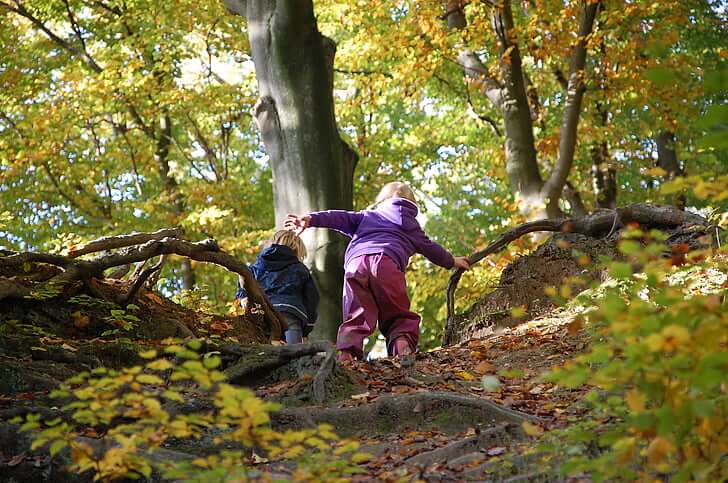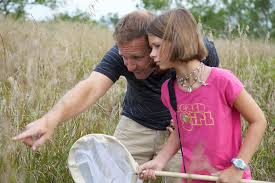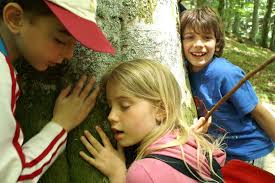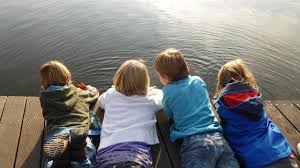
By Evert Heijns | July 1, 2023
How To Teach Kids About Sustainability
Sustainability is like a garden that we need to tend to, nurturing and cultivating it so that it can flourish and provide for us in the long-term.
As adults, we have a responsibility to teach our children about sustainability, so they too can learn how to care for the environment and create a more sustainable future.
In today’s world, where climate change and environmental degradation are becoming increasingly pressing issues, it’s more important than ever to educate our kids on how their actions impact the planet.
Teaching children about sustainability not only helps them understand the importance of preserving our natural resources but also instills in them good habits that they will carry with them throughout their lives.
By teaching kids about sustainability at an early age, we can empower them to make informed decisions and take positive actions towards creating a more sustainable world.
In this article, we’ll explore some effective ways you can teach your kids about sustainability while engaging them in fun and meaningful activities that inspire curiosity and creativity.
Key Takeaways

- Sustainability education should be accessible and engaging for kids, using interactive activities and tools to make learning fun and encourage critical thinking.
- Creating a sustainable lifestyle at home is an effective way to teach kids about sustainability, including reducing waste, conserving water and energy, and supporting local businesses.
- Outdoor activities provide hands-on learning opportunities about wildlife conservation and allow children to connect with nature firsthand, fostering a sense of responsibility towards protecting it.
- Modeling sustainable habits, such as reducing household waste and encouraging eco-friendly transportation choices, demonstrates the importance of individual actions in protecting our planet’s resources for future generations.
The Importance of Sustainability Education for Kids

The significance of educating children on the principles of sustainability is underscored by its potential to instill a sense of responsibility and commitment towards preserving the environment for future generations. By providing kids with an understanding of what sustainability means, they can learn how their actions affect the world around them.
This knowledge can help them develop a more environmentally-conscious mindset that will guide them throughout their lives. Approaching sustainability education in a way that is accessible and engaging for kids is essential.
When presented in a fun and relatable manner, children are more likely to be receptive to the ideas being taught, leading to greater retention and application of these concepts in their daily lives.
It’s important to recognize that sustainable living isn’t just about recycling; it encompasses a wide range of practices such as reducing waste, conserving water and energy, supporting local businesses, and protecting wildlife habitats.
By cultivating an understanding of sustainability in young minds, we not only promote eco-friendly behaviors but also encourage critical thinking skills necessary for problem-solving on both individual and societal levels.
Explaining the concept of sustainability in kid-friendly terms doesn’t have to be complex or overwhelming; instead, it can be an exciting opportunity for children to explore and appreciate our planet’s natural wonders while learning how they can make meaningful contributions towards protecting it.


Explaining the Concept of Sustainability in Kid-Friendly Terms
To effectively introduce the idea of preserving and protecting our planet to younger generations, it is crucial to communicate the notion of sustainable living in a way that is relatable and comprehensible for them. One approach that has proven successful is incorporating sustainability games and interactive activities into their education.
This not only makes learning about sustainability fun, but also encourages children to think critically about how they can contribute to a more sustainable future. When explaining the concept of sustainability to kids, it’s important to use language that they can understand.
For instance, you might explain that ‘sustainability means taking care of our planet so we can continue enjoying all the things we love about it.’Then, provide examples such as recycling, conserving water and energy, and planting trees.
Creating a sustainable lifestyle at home is another effective way to teach kids about sustainability. Encourage them to participate in eco-friendly practices such as turning off lights when leaving a room or using reusable containers instead of single-use plastic bags.
By teaching kids about sustainability from an early age, we are empowering them with knowledge and skills that will help shape their behavior for years to come. It’s important to remember that fostering eco-consciousness doesn’t have to be boring or intimidating – there are plenty of engaging resources available online such as interactive quizzes and games designed specifically for young learners.
Our next step in this journey towards a greener future involves teaching kids about recycling and waste reduction – let’s explore how we can do this effectively!
Teaching Kids about Recycling and Waste Reduction
One effective method for promoting waste reduction and recycling among young learners is through interactive educational tools, such as games and quizzes.
These tools have been shown to significantly increase knowledge retention and engagement in eco-friendly practices. For instance, crafting activities can be an engaging way to teach kids about upcycling and reusing materials.
Composting lessons can also help them understand how organic waste can be turned into nutrient-rich soil. According to a study by the Environmental Protection Agency, only 9% of plastic waste generated in the United States was recycled in 2018.
This highlights the urgent need for increased awareness and action towards responsible waste management. Teaching kids about recycling and waste reduction can equip them with lifelong skills that contribute to a sustainable future.
To encourage further action towards sustainability, it’s important to also teach kids about energy conservation and renewable energy use. By learning about these topics, they can see how their actions impact the environment on a larger scale.

Encouraging Energy Conservation and Renewable Energy Use
Promoting energy conservation and renewable energy use can foster a culture of sustainability in young learners, allowing them to understand the importance of reducing their carbon footprint for a better future.
Renewable energy sources such as solar, wind, and geothermal power can be introduced to children through engaging activities that illustrate how they work. This can include building solar ovens or wind turbines using household materials.
In addition to learning about renewable energy sources, children can also be taught simple energy saving tips that can be implemented at home. For example, turning off lights when leaving a room or unplugging electronics when not in use can make a big difference in reducing overall energy consumption.
Encouraging children to take an active role in monitoring and reducing the family’s energy use not only helps the environment but also promotes responsibility and accountability.
By introducing young learners to renewable energy sources and encouraging them to adopt simple energy saving habits, we are helping them become conscious consumers who understand the importance of sustainability. This knowledge can then extend beyond just their own personal behaviors into larger societal changes that benefit us all.
In the next section, we will explore how sharing the benefits of eating locally sourced and seasonal foods with children can further promote sustainable practices without writing ‘step’.

Sharing the Benefits of Eating Locally Sourced and Seasonal Foods
Exploring the advantages of consuming locally sourced and seasonal foods can help young learners understand how their food choices impact the environment. By choosing to eat foods that are grown and harvested nearby, children can support local farmers and reduce their carbon footprint. Additionally, seasonal eating ensures that produce is at its freshest and most nutritious, providing health benefits for both individuals and the planet.
To evoke an emotional response in the audience, consider these four benefits of seasonal eating:
- Eating with the seasons supports biodiversity by promoting a variety of crops instead of monoculture farming.
- Local food systems prioritize sustainability by reducing transportation emissions and packaging waste.
- Seasonal eating fosters a connection to nature as children learn about crop cycles and enjoy fresh produce at its peak flavor.
- Supporting local farmers strengthens community ties and ensures access to healthy food options for all.
By emphasizing these positive impacts on both personal health and environmental sustainability, educators can encourage young learners to make informed decisions about their food choices.
Engaging kids in nature conservation and biodiversity preservation requires hands-on experiences that foster a sense of stewardship. One way to do this is by creating opportunities for children to explore natural spaces in their communities.
Engaging Kids in Nature Conservation and Biodiversity Preservation
Engaging young learners in nature conservation and biodiversity preservation can be a thrilling and rewarding experience, as they discover the wonders of the natural world. It is crucial to foster a sense of environmental stewardship in children from an early age so that they can grow up with an appreciation for the beauty and diversity of life on our planet.
One way to achieve this is through outdoor activities that provide hands-on learning opportunities about wildlife conservation. There are many ways to engage kids in nature conservation, such as birdwatching, planting native species, or creating habitat for local wildlife.
By participating in these activities, children can develop a deeper understanding of how ecosystems work and learn about the important role that each species plays in maintaining balance within them.
Additionally, outdoor activities allow children to connect with nature firsthand and develop a sense of responsibility towards protecting it. Wildlife conservation is not just about preserving individual species; it’s also about protecting entire ecosystems. Children who learn about biodiversity preservation will understand how their actions impact the environment around them.
This knowledge can inspire them to take steps towards creating sustainable habits that protect wildlife habitats while reducing their carbon footprint. Encouraging sustainable transportation choices is one such step that we’ll discuss next.
Encouraging Sustainable Transportation Choices
To further engage kids in nature conservation and biodiversity preservation, another approach to teaching sustainability is through encouraging sustainable transportation choices.
Active transportation options such as walking, biking, or using public transit have numerous benefits for the environment and personal health. By choosing these modes of transportation instead of driving, kids can reduce their carbon footprint while also getting exercise.
Community engagement is also crucial in fostering sustainable transportation choices. Encouraging schools to participate in initiatives like Walk to School Day can help promote active transportation as a viable option.
Furthermore, working with local governments to improve infrastructure such as bike lanes or pedestrian walkways can make it safer and easier for kids to choose eco-friendly modes of transportation.
By incorporating sustainable practices into daily routines, parents and caregivers can lead by example and model sustainable habits for kids to follow. This includes opting for active transportation when possible and reducing reliance on single-use plastics or other environmentally harmful products.
Through consistent action and education, we can empower the next generation with the knowledge and tools needed to create a more sustainable future.

Leading by Example: Modeling Sustainable Habits for Kids to Follow
responsibility and promote a culture of sustainability. Children are highly influenced by the behaviors they see around them, particularly those of their parents or guardians. Therefore, incorporating practical tips for sustainability into daily routines can have a significant impact on children’s attitudes towards the environment.
One way to model sustainable habits is by reducing household waste. This can be achieved through simple actions such as composting food scraps, using reusable bags and containers instead of disposable ones, and recycling properly. Children can be involved in these activities by helping with sorting recycling materials or setting up a small compost bin in the backyard.
Another approach to modeling sustainable habits is by encouraging eco-friendly transportation methods. Walking or biking instead of driving short distances not only reduces carbon emissions but also promotes physical activity and quality time spent outdoors with children.
Parents who choose to use public transportation or carpool can also demonstrate the importance of reducing individual carbon footprints while saving money on fuel costs.
Modeling sustainable habits through practical actions integrated into daily routines provides an effective way to teach children about environmental responsibility and promote a culture of sustainability.
Incorporating activities like reducing household waste and encouraging eco-friendly transportation choices demonstrates how even small changes in behavior can make a significant impact on protecting our planet’s resources for future generations.
Frequently Asked Questions
How do you explain the negative impact of unsustainable practices to kids in a way that they can understand?
Although explaining consequences of unsustainable practices can be challenging, children can understand through simple analogies and visuals. Encouraging eco-friendly actions, like recycling and reducing waste, helps them see how their choices impact the environment and future generations.
What are some creative ways to get kids excited about recycling and waste reduction?
Encourage kids to reduce waste by engaging them in eco-friendly crafts and sustainable fashion. Use recycled materials for creative projects and teach them the importance of reducing, reusing, and recycling. These hands-on activities can inspire a lifelong commitment to sustainability.
How can parents encourage their kids to use renewable energy sources in their daily lives?
Renewable energy games and eco-friendly crafts can be fun ways to involve children in sustainable practices. Parents can provide educational materials and encourage their kids to learn about the benefits of renewable energy sources for a more eco-friendly lifestyle.
What are some ways to make locally sourced and seasonal foods more appealing to kids?
Farm to table options and cooking workshops can help make locally sourced and seasonal foods more appealing to kids. These options provide opportunities for children to learn about healthy eating, where their food comes from, and how it’s prepared, making them more likely to try new things.
How can parents get their kids involved in outdoor activities and conservation efforts?
Encouraging children to engage with nature appreciation and eco-friendly crafts can foster a sense of responsibility towards environmental conservation. Activities such as gardening, recycling, and hiking can instill values that promote sustainable living practices early on.
Conclusion
Sustainability education is vital in shaping the next generation’s understanding of how our actions impact the environment. By teaching kids about sustainability, we can instill in them a sense of responsibility towards the planet and encourage them to make more conscious choices. We must explain complex concepts like sustainability in simple terms that are easy for children to understand.
One way to teach kids about sustainability is through practical activities, such as recycling and waste reduction. Educating children on energy conservation and renewable energy use can result in long-term benefits for both the planet and their wallets. Additionally, encouraging sustainable transportation choices can help reduce traffic congestion and air pollution.
Engaging kids in nature conservation and biodiversity preservation can also foster an appreciation for the natural world. Sharing stories of how humans have negatively impacted wildlife habitats or polluted waterways may inspire children to take action towards protecting endangered species.
Ultimately, parents and educators play a crucial role in leading by example when it comes to modeling sustainable habits for kids to follow. One anecdote that highlights this idea is that of a family who regularly practiced composting at home. The young daughter asked her mother why they did it, and she explained how it helped create nutrient-rich soil for plants to grow better without using harmful chemicals.
In conclusion, teaching kids about sustainability requires creativity, patience, and dedication from parents and educators alike. It involves explaining complex concepts in simple terms while engaging children with hands-on activities that demonstrate key principles. By modeling sustainable behaviors ourselves, we can inspire future generations to be responsible stewards of the planet.
